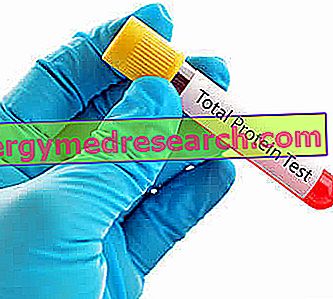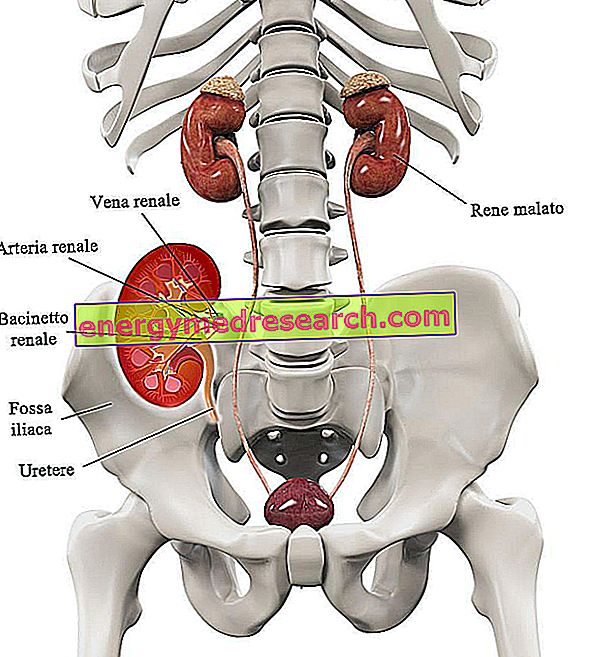General information
Diagnostic investigations allow us to recognize and assess the extent of the disease. First of all, acute (rapid) and chronic (slow progression) leukemia is distinguished.

Therapeutic approach
The treatment of leukemia is constantly evolving and provides for several options: the decision to undertake a specific therapeutic line is based on the specific clinical case; the choice of therapy depends on a number of factors, including:
- The type of leukemia (acute or chronic);
- The blood values and the results of the other diagnostic investigations, which among other things allow to determine the characteristics of tumor cells;
- Stage / phase of the disease;
- The patient's age;
- The general health conditions (presence of symptoms, other concomitant diseases ...).
The purpose of the therapy can be of type:
- Curative, if it is possible to aim at the healing of leukemia;
- Palliative : when - being unlikely to be able to eliminate the pathological condition - an attempt is made to improve the quality of life, trying to make cancer cells regress to slow down the progression of leukemia.
Furthermore, there are medical and / or psycho-oncological support therapies that help to alleviate disorders such as pain, fear or psychological burden.
Choice of therapy
Leukemia treatments differ mainly in their therapeutic action and tolerability. The oncologist or hematologist can discuss with the patient the most suitable treatment plan, detailing the ways in which it will be implemented and the results that can be achieved.
Often, a multidisciplinary approach is needed for the treatment of a leukemic patient: primary therapy can take place under the direction of a medical oncologist, hematologist and radiotherapist. Sometimes, different substances or methods are combined synergistically to achieve the best outcome from the therapy. At the time of diagnosis, a routine ophthalmologic evaluation must also be established, since the lesions on the visual apparatus can be asymptomatic.
Some therapeutic methods can be applied repeatedly, if the disease recurs after a first operation, or an alternative treatment plan can be used.
In the case of acute leukemia, the decision on which treatment to take must be sudden, since the disease is characterized by rapid progression, which can quickly lead to death, if left untreated.
What is the difference between healing and remission?
In the field of oncology it is difficult to talk about a real cure, since, sometimes, the disease can reappear even after some time. Depending on the type of cancer, doctors have established a period of time after which a patient can be considered reasonably healed if, despite periodic careful checks, the disease does not cause any manifestation. The term " remission " indicates an attenuation or disappearance of the symptoms caused by a tumor; in particular, the term partial remission indicates the disappearance of only some signs of the disease. The treatment produces complete remission of the disease if there are no more traces of leukemia detectable with the diagnostic means available, although there is no certainty that the tumor has been completely eliminated. However, the longer the remission phase lasts, the greater the chance that the tumor is permanently eradicated: healing is achieved when total remission is maintained for several years.
Therapeutic methods
The doctor determines the possibility of treating leukemia based on age, general health, the type of leukemia affected and whether or not the tumor has spread to other parts of the body.
Leukemia treatments offer different possibilities:
Active surveillance
In the case of some forms of leukemia with very slow progression and in certain clinical conditions, the therapy can be postponed (example: chronic lymphatic leukemia, LLC) . The doctor monitors the patient's state of health during periodic checks, postponing the start of treatment until the first uncomfortable symptoms or disturbances occur, such as fever, swelling of the lymph nodes or spleen or difficulty breathing. The appearance of clinical signs such as anemia and a drastic decrease in the number of platelets makes the therapy necessary. In the case of acute leukemias we must never wait, but always start therapy as soon as possible.
Chemotherapy
Systemic chemotherapy (with or without radiotherapy) is the main form of treatment for most types of leukemia. It is a treatment that uses a single drug or combination of chemicals to kill leukemia cells or stop their proliferation. The basic strategy consists in spreading cytostatic agents through the blood vessels, capable of producing a systemic effect, interfering with cell division and preventing leukemia cells from multiplying.
In this way, direct treatment of the neoplasm causes effects also on healthy cells and tissues (for example: blood elements in the bone marrow, cells of the hair follicles or mucous membranes etc.). The damage of the healthy and normal cellular component is the main cause of the various side effects of chemotherapy, which regress after the end of the therapeutic session.
Chemotherapy cycles are performed as an outpatient or hospitalization procedure. A combination of different chemotherapy drugs is often provided, which can be administered:
- Intravenous: the therapy lasts several months (in cycles, with pauses between sessions).
- orally: chemotherapy with tablets can continue for life.
The different types of treatment can be:
- monochemotherapy
- Multi-pharmacological therapy: involves the synergistic exploitation of the different mechanisms of action of drugs active in monochemotherapy.
- Myeloablative chemotherapy: high-dose therapy performed to increase the chances of leukemia cells being destroyed (usually precedes a stem or bone marrow transplant). The bone marrow is particularly afflicted with undesirable effects, since it is completely destroyed and must be subsequently rebuilt: following treatment with a high dose of cytostatics, the stem cell transplant is performed. The duration of the procedure, performed as a hospitalization, varies from one to three months and, generally, one leaves the hospital several weeks after the transplant.
| Stages of therapy of a chemiosensitive neoplasm | |||
| Phase | Meaning | mode | |
| 1 | Induction of complete remission | Tumor mass reduction. Elimination of any clinically detectable signs of disease (with standard techniques). | Multi-drug therapy at standard dosage or high dosage with hematopoietic growth factors. |
| 2 | Consolidation of complete remission | Residual neoplastic mass reduction after induction. | Therapy (with cross-resistant drugs) with support of growth factors. |
| 3 | Cyclic re-induction maintenance | Minimum residual disease containment. | Periodic therapy with various combinations of drugs (not myeloablative). |
Therapy with tyrosine kinase inhibitors
Some drugs specifically inhibit specific tyrosine kinases (enzymes capable of transferring phosphate groups from high-energy donor molecules such as ATP to specific substrates during a biochemical reaction). The tyrosine kinase inhibitors induce a slowing in the proliferation of the leukemic cells and allow to control the progression of the disease. These drugs are indicated in cases of chronic myeloid leukemia (CML) and in acute lymphatic leukemias (Ph + ALL): only active against tumor clones that present the Philadelphia chromosome.
Intake of tyrosine kinase inhibitors occurs orally (tablets). CML therapy is performed on an outpatient basis, while in the case of ALL, tyrosine kinase inhibitors are administered in combination with chemotherapy in hospital settings.
An example is Imatinib mesylate (Glivec ®), a specific inhibitor of the BCR / ABL kinase, used in Ph + CML therapy.
Hematopoietic growth factors
Hematopoietic growth factors are substances that stimulate the proliferation and differentiation of blood cells in the bone marrow and their spread from the organ to the bloodstream (eg erythropoietin, thrombopoietin). This treatment is used in different forms of leukemia and in certain clinical conditions, even if it is not able to cure leukemia.
Immunotherapy
Antibody and interferon therapy
Antibodies (Ab) are a fundamental component of the immune system: the body naturally produces these elements in defense against viruses, bacteria, etc. Some drugs are based on this consideration: the ABs are synthesized (in the laboratory) for a specific biological target. The antibodies, inoculated in the patient, recognize a specific and unique receptor on the surface of the leukemic cells (they mark the tumor clones). In this way the body's natural immune component can selectively recognize and destroy altered or unwanted cells. Some antibodies can also be coupled to a cytostatic agent, to directly and specifically induce the relevant substance to the leukemic cells, allowing to produce less damage to healthy cells. The antibodies are administered in different intravenous therapeutic cycles and the duration of treatment is variable.
Interferons (IFN), produced by synthesis (in the laboratory), stimulate the immune system with a non-specific effect, in the sense that they induce a general immune reaction: they act with an indirect mechanism on the survival of leukemia cells, decreasing their cell adhesion and amplifying the activity of the cells of the immune system. The therapy involves subcutaneous injections to be performed daily.
Radiotherapy
Leukemias are never treated exclusively with radiotherapy. The procedure involves the use of X-rays or high energy in order to damage the leukemic cells and stop their growth. Irradiation may be indicated in various cases:
- Total body radiotherapy, to supplement high-dose chemotherapy, during the preparation of the patient for stem cell transplantation;
- Local radiotherapy, for localized manifestations of the disease not sufficiently controlled by drugs (example: central nervous system or testicles).
Other treatments
If splenomegaly is excessive, the doctor may recommend surgical treatment to remove the spleen.
In the single clinical case, it is not possible to apply all the therapeutic methods described above, but sometimes it may be necessary to resort to a combination of different treatments. Particular therapeutic importance in leukemia patients is assumed by the transplantation of stem cells or bone marrow .



